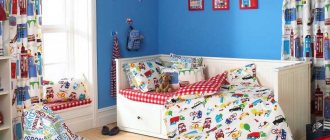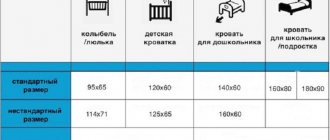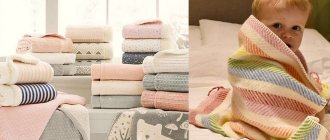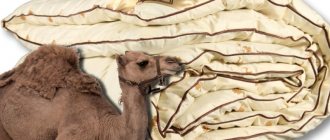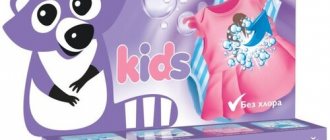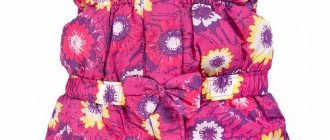Hello dears!
In one of my articles about jackets for children, I showed you my son’s Oldos membrane jacket, which I have not yet decided to put on him in the winter and we are using it in the fall and spring. Winter has arrived and, as practice has shown, the result is positive.
But more on that another time, but now let’s figure out how to properly dress babies in the cold season and in membrane clothing. I would also like to show you some clothes that I put on my son in winter, as well as clothing options for jackets.
Membrane operating principle
The membrane is a thin porous film of polyurethane, which is usually used to cover synthetic materials. It is based on microscopic pores that do not allow water to enter the clothing, but at the same time sweat freely passes through. This creates ideal conditions for creating a microclimate, thanks to which the membrane fabric is able to retain heat, “breathe”, and protect from low temperatures, water and wind.
Most often, the membrane is made of three layers, each of which performs a specific function:
- allows air to pass through
- ensures dryness and stable temperature,
- sweat evaporates
- resists wind and other influences.
Some membranes have an additional fleece layer, which increases their thermal insulation properties. Membrane jackets and sets can be worn both in spring and summer, and in the cold season.
The first models of clothing with multi-layer construction were used in the equipment of athletes. Nowadays, everyday things for children and adults are produced on its basis. Depending on the structure, the membrane is:
- 2-layer (2L), which is used when sewing jackets and overalls with insulation;
- 2.5-layer (2.5L), which has an additional layer of foam jersey;
- 3-layer (3L), from which equipment for working in extreme conditions is sewn.
Depending on the type of membrane, multilayer clothing can be pore (microporous hydrophobic and hydrophilic structure), non-pore (hydrophilic structure) and combined (bicomponent structure).
To improve the already impeccable properties, the membrane is coated with water-repellent solutions during production. To restore this coating, membrane jackets and suits must be periodically treated with special impregnations.
Sprayed or impregnated fabric
This is a covering fabric impregnated with a special composition - or it is sprayed on top in the form of a film. There are also combined options - both impregnation and film. “Minus”: water resistance gradually decreases after 20-50 washes. When processing fabric by spraying (for example, polyurethane), the substance is foamed - micropores are formed that are permeable to air, but impermeable to water. Thus, the fabric breathes, despite the film. Impregnation (the most famous is Teflon) is a solution with which fabric fibers are impregnated, but the spaces between the fibers are not filled, so the fabric also breathes.
The options for impregnation and spraying are very different; each company uses its own “recipe”, coming up with an exclusive name for it - you do not need to understand the intricacies of chemical processes. Just look at the water column indicator and rely on the conscience of the manufacturer, as well as reviews from experienced mothers.
How to care for clothes with waterproof impregnations/films: you can use regular laundry detergent, do not bleach, do not soak, do not dry on heating devices. All information is on the label. It is advisable, however, to wash with liquid detergents and not to use conditioners and other additional chemicals, so as not to spoil the waterproof layer too quickly.
Advantages of membrane clothing
Membrane fabric has high potential, thanks to which it is able to displace conventional clothing and footwear from the market. Buyers value the membrane for its special advantages, which allow it to remain active in any weather. These include:
- high levels of water resistance;
- ensuring ease and freedom of movement;
- the ability to allow air to pass through and maintain optimal thermoregulation;
- absence of a “greenhouse” effect due to the use of a rubberized waterproof layer;
- versatility, which can be adjusted through the use of different intermediate layers;
- stylish and fashionable design;
- thoughtful equipment, including comfortable hoods, high collars, and fasteners that regulate the size of the product.
Membrane items are the best option for children who, even in dry weather, will definitely come across dirt or a puddle. Thanks to the dirt- and water-repellent impregnation in a membrane jacket or overalls, a child can freely walk in the park, run through the forest or jump in puddles.
Disadvantages of membrane clothing
Membrane fabric items are designed for outdoor activities. The membrane is popular among adults because it is ideal for mountaineering, hiking, hiking and other sports that require high physical activity. Accordingly, if the child is still small, if he spends more time in a stroller and moves little during walks, there is no point in dressing him in membrane clothes.
Other disadvantages of membrane products include:
- the need for delicate care using special products and impregnations;
- relatively short service life, only a few years;
- the need for careful selection of the intermediate layer of clothing;
- synthetic origin of the material.
Another significant drawback of membrane products is their high cost, which distinguishes them from things made from simple materials. The price is determined by the characteristics of the membrane itself and the high costs that accompany its production.
How to choose the right membrane clothing for your child
Currently, membrane technology is successfully used by manufacturers of the best outerwear for children and adults. However, it is not enough to know about the advantages of things made of membrane; you also need to understand how to choose it correctly. To do this, during purchase you should:
1. Check the seams for strength and neatness. 2. Make sure that the clear and rich colors will not leave traces of paint. To do this, just run a damp cloth over the surface of the membrane. 3. Check whether the size of the membrane product matches the child’s parameters. How correctly it will fit your figure depends on this. 4. Study the waterproofness of the membrane. This parameter indicates how much moisture the membrane fabric can withstand without getting wet. For different manufacturers, it ranges from 1000 to 20,000. Accordingly, products with a coefficient of 1000 are best worn in dry weather, and products with a coefficient of 20,000 can withstand even a strong storm. 5. Study the vapor permeability of the membrane. This parameter characterizes the level of activity at which moisture will be removed from the body. It can be from 3000 to 15000. Jackets and suits with a coefficient of 3000 are suitable for children with low physical activity, and with a coefficient of 15000 - for children who play sports and spend time actively. 6. Check the presence of insulation. If a mother buys a membrane jacket or trousers for the winter, she needs to pay attention to the quality of the insulation. This determines how comfortably the child will endure the cold during winter walks.
Possible problems
- “The grandmother fainted multiple times at the sight of the child in synthetics.”
Soviet synthetics were rough and irritated the skin; these memories are difficult for the older generation to recall. Today the materials are not the same. And if your child is allergic to synthetics, by the time you choose winter clothes you already know about it, and you will not buy a membrane. Pay your grandmother's attention to the clothes (underwear) for athletes: they are all synthetic. No one has ever seen an athlete sweating after a competition while scratching himself until he bleeds.
- “We bought the vaunted membrane, but the child is still freezing!”
The membrane is not required to heat. Especially a sedentary child. You may have made mistakes: layers of natural fabrics under the overalls, wrapping (thick layer on thick layer) and the most banal thing - not taking into account the child’s characteristics. There are freezing children. Typically, membrane clothing is bought for children at least three years old, when there is plenty of movement on the street. As already mentioned, the membrane creates a microclimate below body temperature - if the child previously wore very warm clothes, he could get used to being wrapped up and will not tolerate the fresh sensations of the membrane well.
- “How can I decide on such thin clothes, I myself am freezing outside in a down jacket!”
As an experiment, try repeating all the movements after your child on one walk. After 10 minutes you will realize that you are wearing too much. Isn't the child wearing too much? You can check whether a child is cold or not in the old fashioned way: after a walk, put your hand behind his collar. Touch your forearms, neck. They can be cool (remember the microclimate that the membrane creates), but they should not be specifically cold.
- “How can you tell whether the membrane has deteriorated or not?”
Probably not. Athletes understand this immediately – they feel it the hard way. If the membrane jacket begins to leak, it means that the membrane or water-repellent coating has deteriorated. Membrane clothing does not deteriorate from numerous walks; it is already designed for heavy loads. It can deteriorate from repeated drying on a radiator and washing with dry detergents.
Tips for caring for membrane clothing
Clothing made from membrane materials requires careful handling and delicate care. It can last quite a long time if you care for it properly. We will talk in more detail below about the features of washing membrane clothes. As for storage rules, membrane jackets and other items should be stored away from direct sunlight. To do this, use special covers and hangers. By following these principles, you can preserve the appearance of the product and increase its service life.
How to wear membrane clothing
Outerwear made of membrane materials is an excellent option for rainy weather. The intermediate layer may change depending on the air temperature. At temperatures above +15 degrees, you can use a jacket without lining or even a raincoat. At temperatures below +15 degrees, it is better to wear a membrane model with a fleece lining. It can be worn both in cool autumn and warm rainy winter.
In the case of membrane jackets and sets, moisture evaporates, and heat is retained due to the difference in osmosis under the membrane fabric and outside. Accordingly, in order to maintain heat, you need to remove moisture. This can only be achieved through active pastime. That is why such clothes are an ideal choice for active and active children. If the child will sit in the stroller most of the time, it is better to additionally put on a warm jacket.
It is better not to use things made of cotton fabric as an intermediate layer. It is characterized by increased hygroscopicity, which worsens the properties of the membrane. In cool summer or spring, it is better to limit yourself to thermal underwear, sweaters and T-shirts made of high-quality synthetic fabric that wicks away moisture well. For more warmth, you can wear a jacket made of wool or fleece under the membrane.
Why is a modern jumpsuit better than a Cheburashka fur coat?
Any living organism evaporates moisture when it moves. For heat conservation, it is very important that this moisture moves away from the body as quickly as possible. Otherwise, it will “stick” to the skin and begin to cool at rest and heat up during active movement, accumulating more and more. If you wear clothes that do not wick away excess evaporation, you will soon feel a thin film of ice enveloping your body at rest. For example, while waiting at a bus stop. If the moisture has evaporated, the body feels comfortable in any situation. Therefore, high-tech clothing was invented for athletes, because they need to keep their body sensations comfortable and not get sick after many overloads. Gradually, these clothes seeped into the world of ordinary citizens - every year the consumer, subject to the demands of modern life, becomes more and more picky about his choice.


